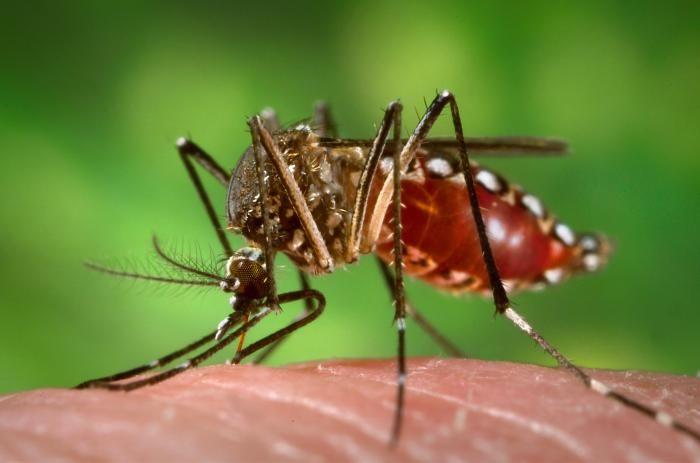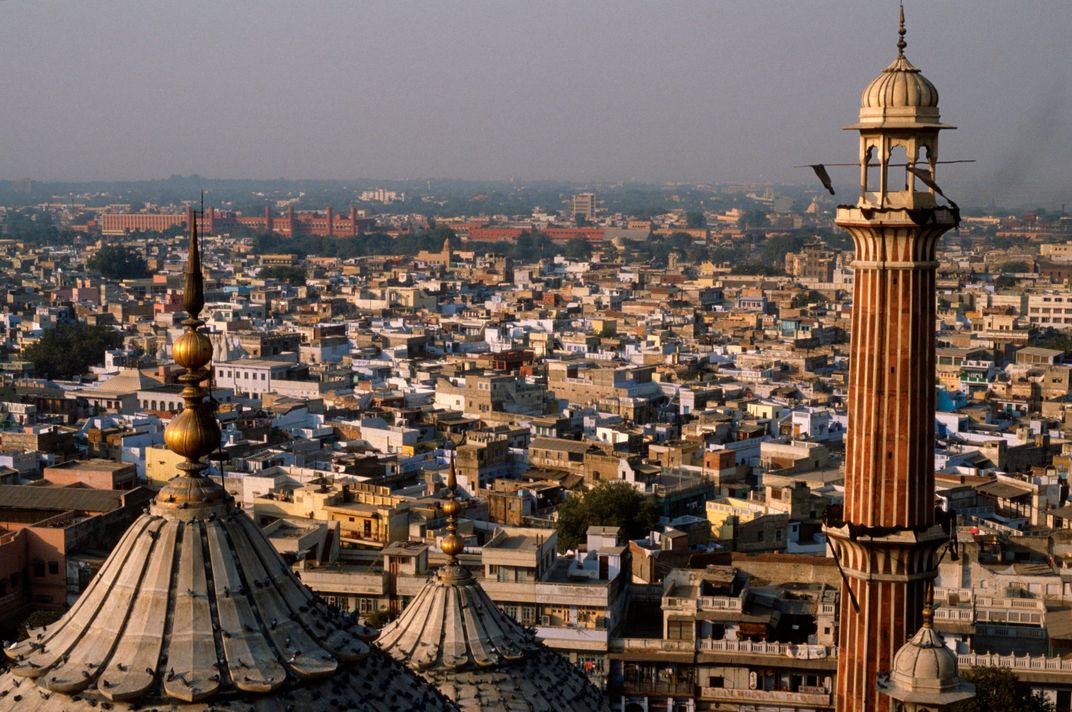The World’s Megacities Are Making Dengue Deadlier
Outbreaks are more common now thanks to bigger cities and more places for mosquitoes to live
/https://tf-cmsv2-smithsonianmag-media.s3.amazonaws.com/filer/4d/4c/4d4cda50-7bb0-404f-adb8-fab58e3e0b62/42-77482805.jpg)
While the world’s attention is focused on the Zika virus spreading through the Americas, large urban areas in Southeast Asia are fighting off outbreaks of dengue fever. The mosquito-borne illness causes high fever, rash and debilitating joint pain, and it can develop into a more severe and lethal form. An epidemic this past October swept through New Delhi, sickening more than 10,000 people and killing 41, overwhelming the city’s hospital capacity.
The two species of mosquito primarily responsible for transmitting dengue, Aedes aegypti and A. albopictus, live in close proximity to humans. Our homes are their homes. In urban areas, where most dengue transmission happens, recent housing booms have provided more places not only for humans to live, but also these mosquitoes. The influx of people, increased construction and ongoing travel of humans and mosquitoes around the world have led to a 30-fold rise in urban dengue outbreaks between 1960 and 2010, according to the World Health Organization.
Fighting this problem will mean combining some of the world’s most basic public health measures, like plumbing and sanitation, with high-tech vaccines and mosquito control measures. The goal is to provide a better home for humans while kicking mosquitoes to the curb. It will be tough, says infectious disease expert Duane Gubler of the Duke-NUS Graduate Medical School in Singapore. But he believes that this dual focus may finally provide traction against the deadly disease.
“If you can decrease the mosquito population while increasing herd immunity, you can decrease transmission and prevent epidemics,” Gubler says.

Urban centers have long been magnets for infectious disease. As soon as humanity started living in large cities, epidemics swept through the population, creating death and misery on a scale seldom seen.
Then, as now, epidemics required the confluence of a large pool of uninfected, non-immune people with suitable conditions for the pathogen to spread. For vector-borne diseases, that also meant the presence of the mosquito, tick or flea that helped to move the infection from person to person. Large cities placed all of these factors in close proximity, and the results were catastrophic. Early epidemics of plague and smallpox in ancient Rome, for instance, killed approximately half the population.
More than half of humanity now lives in cities, and that percentage is growing. As more people leave their agrarian pasts for the promise of the big city, many urban centers have boomed into mega-metropolises of more than 20 million people. This rapid influx of people has led to burgeoning slums in the world’s biggest cities, as well as new construction in middle- and upper-class neighborhoods.
The emergence of the modern megalopolis shows that humans ultimately adapted well to their crowded surroundings, but the same has been true for our microscopic pathogens.
Dengue began as a disease of primates that was transmitted in the forests of Africa by mosquitoes. The virus adapted to humans, as did the A. aegypti mosquito, which passed the virus from host to host in its saliva. As humans moved to small villages, the mosquito and the viruses it carried moved with us, causing small outbreaks of dengue.
The African slave trade transported the mosquito, which laid its eggs in the water casks aboard ship, and diseases like dengue, malaria and yellow fever spread around the world. Many of the world’s first large cities were shipping hubs in warm, humid areas, making them conducive to the spread of tropical diseases.
Still, before World War II, outbreaks of dengue occurred only every 10 to 40 years and rarely caught the attention of physicians or public health officials, Gubler says. Then the effects of dengue and other mosquito-borne diseases on military personnel brought dengue back to the forefront, as did the post-war population boom in Southeast Asia and its accompanying rush of urbanization. This change transformed dengue from a tropical rarity into a major urban pathogen.
Initial investment in mosquito control programs slowed the transmission of dengue, but budget cuts in the 1970s and '80s forced health departments to scale back these programs. At the same time, rapid globalization moved people and pathogens around the world faster than ever before.
The world’s megacities also pose another type of risk. The dengue virus has four different subtypes, and infection with one type doesn’t make you immune to any of the others. It’s one of the factors making a dengue vaccine so hard to produce. Even worse, a second infection with the dengue virus isn’t just an inconvenience, it’s also potentially deadly. Because the immune system has seen a closely related virus, it overreacts when it responds to a second dengue subtype. The result is dengue hemorrhagic fever, when an overreactive immune response causes severe internal bleeding and death.
Massive cities are more likely to have multiple subtypes of dengue circulating at the same time, increasing the chances for developing dengue hemorrhagic fever. The result is the explosive dengue outbreaks that now regularly strike tropical cities like New Delhi, São Paolo and Bangkok. Dengue is an annual problem in New Delhi, with cases climbing after the yearly monsoon season and peaking in early fall.
Exactly how many people are affected by these outbreaks isn’t clear because a large proportion of disease occurs in resource-poor settings where epidemiological surveillance is limited at best, says Narendra Arora, a pediatrician and infectious disease researcher with the INCLEN Trust in India. In addition, the symptoms of dengue closely match those of other tropical diseases like malaria and chikungunya.
The World Health Organization had estimated that 20,474 people in India are sickened by dengue each year, but a 2014 study in the American Journal of Tropical Medicine & Hygiene by Arora and Donald Shepard at Brandeis University showed that the number was likely more around 6 million, 300 times greater than WHO estimates.
“It showed we really don’t know how much dengue there is. We need to know more about how much of a problem it is,” says Carl-Johan Neiderud, a medical microbiologist at Uppsala University in Sweden.

Few countries have managed to control dengue permanently, but those with some success have focused on mosquito control.
Unfortunately, anti-malaria measures such as insecticide-treated bed nets aren’t effective against dengue because A. aegypti is active during the day, not at night like the malaria-carrying mosquitoes. A. aegypti is also quite content to live its entire life indoors, and it can breed in very small volumes of water. Their eggs can withstand desiccation for several months, making it easy for them to survive temporary dry spells. That means standing water at construction sites and in slums provide mosquitoes with the perfect places to live and reproduce.
In the recent outbreak in New Delhi, news reports linked the construction of one new apartment complex with a large cluster of dengue cases. Scientists hypothesized that mosquitoes breeding in pools of water in the construction site were fueling dengue cases nearby.
Arora says these new construction sites are not a leading cause of the past year’s outbreak, though he acknowledges that they may have contributed. Instead, he says that inadequate and nonexistent sanitation in New Delhi’s many slums is a far larger contributor to outbreaks. Many of the workers on these projects arrive from other parts of India that see fewer dengue cases, so they are very likely to lack immunity to the dengue virus. They also tend to live in the slum areas, further exacerbating the problem.
To Arora, going back to public health basics like improving plumbing and sanitation are the first steps. He also cited increasing enforcement of an Indian law that prohibits standing water in residential properties and yards. Fines for violators have been encouraging residents to take sanitation issues more seriously and remove potential mosquito breeding grounds from homes. Other measures, such as installing or fixing window screens and repairing doors and siding where mosquitoes can enter, will also help provide a barrier between humans and mosquitoes.
“It is not just the aesthetics of the place. A cleaner India will have a tremendous health impact,” Arora says.
Gubler cites Singapore as an example of effective dengue control. A combination of public education campaigns and larval and insect control measures have helped keep the city dengue-free for nearly 20 years. Although the countries around Singapore were succumbing to regular outbreaks, “Singapore remained a little island in a sea of dengue,” he says. “But you need political will and economic support for these programs to work. It’s a battle between economics and public health, and public health always loses.”
Clinical trials of new dengue vaccines are ongoing, and three candidates are approaching formal approval. Meanwhile, trials in Brazil and Florida are testing the effectiveness of genetically engineered sterile male mosquitoes, providing another new tool in the war on dengue. Gubler is optimistic: “For the first time in my career, we have the tools to control this disease.”
/https://tf-cmsv2-smithsonianmag-media.s3.amazonaws.com/accounts/headshot/carrie-arnold.jpg)
/https://tf-cmsv2-smithsonianmag-media.s3.amazonaws.com/accounts/headshot/carrie-arnold.jpg)